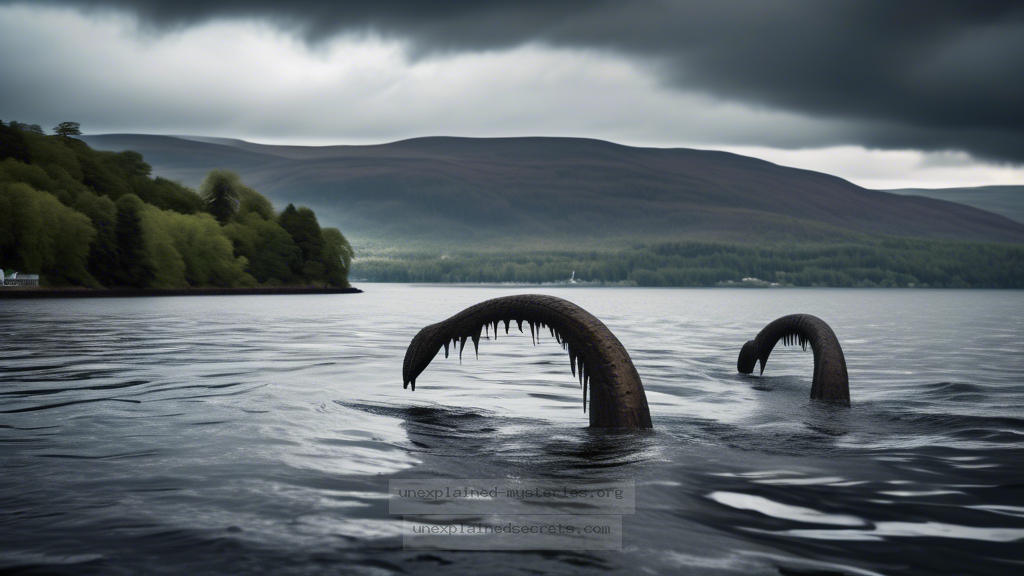What Do Sonar Detections at Loch Ness Reveal About the Elusive Monster?
What Do Sonar Detections at Loch Ness Reveal About the Elusive Monster?
The legend of the Loch Ness Monster has captivated the public imagination for decades, leading countless adventurers and researchers to explore the depths of Scotland’s Loch Ness in search of evidence. Among the most intriguing methods employed in this quest is the use of sonar technology, which has yielded some tantalizing results over the years. But what do these sonar detections really tell us about what lies beneath the surface? Understanding the implications of sonar findings could not only shed light on the Loch Ness Monster but also on the broader field of cryptozoology itself. This post will delve into the historical context, core concepts, and future developments surrounding sonar detections in Loch Ness, while addressing common misconceptions and providing insights on best practices for further investigation.
Historical Context of Loch Ness Monster Sightings
The Loch Ness Monster, affectionately known as “Nessie,” has been part of Scottish folklore for centuries. The first recorded sighting dates back to the 6th century, when St. Columba reportedly encountered a creature in the loch. However, it wasn’t until the 1930s that the modern legend truly began to take shape, largely due to a famous photograph known as the “Surgeon’s Photo,” which purportedly captured Nessie in the water. This sparked a wave of interest and numerous subsequent sightings, each adding to the mystique of the loch.
As the legend grew, so too did the methods of investigation. Traditional eyewitness accounts gave way to more scientific approaches, including sonar technology, which began to be used in the 1950s. Researchers aimed to uncover the truth behind the monster using advanced tools that could penetrate the dark waters of Loch Ness, revealing the secrets that lay beneath.
The Basics of Sonar Technology
Sonar, or Sound Navigation and Ranging, is a technique that uses sound waves to detect objects underwater. By emitting sound pulses and analyzing the echoes that return, sonar can create images of underwater structures, schools of fish, and potentially larger animals. There are two main types of sonar: active and passive. Active sonar sends out sound waves and listens for their return, while passive sonar listens for sounds made by objects without sending out any signals.
This technology has revolutionized underwater exploration. In the case of Loch Ness, researchers have employed sonar to map the loch’s depths, identify underwater features, and look for any signs of large creatures. The results have been both enlightening and perplexing, often leading to more questions than answers.
Notable Sonar Detections at Loch Ness
Several significant sonar surveys have taken place over the years, each contributing to the ongoing mystery of the Loch Ness Monster. One of the most notable occurred in 1987 during the “Operation Deepscan,” which involved a fleet of boats equipped with sonar technology surveying the loch’s entire expanse. The operation revealed several large, unidentified objects moving through the water, which reignited public interest in Nessie.
Another significant study was conducted in 2003, when researchers from the University of St Andrews used sonar to scan the loch. They detected a large, unexplained object approximately 75 feet long, which further fueled speculation about the existence of a creature resembling the Loch Ness Monster. Such findings raise questions about what these large masses could be—are they large fish, logs, or something more enigmatic?
Core Concepts: What the Sonar Findings Suggest
While sonar technology has provided intriguing data, interpreting these results is not straightforward. The large objects detected could be attributed to various natural phenomena, including large schools of fish, underwater debris, or even the loch’s unique geological features. The sonar findings often lead to more hypotheses than concrete conclusions, which can be both frustrating and exciting for researchers and enthusiasts alike.
🔍 Key Point: Sonar can detect large masses, but it cannot definitively identify them. Further investigation is needed to clarify the nature of these findings.
Alternative Perspectives on Loch Ness Sonar Data
Not all researchers agree on the interpretation of sonar data from Loch Ness. Some skeptics argue that the mysterious objects detected are simply misidentified natural phenomena rather than evidence of a cryptid. They point out that sonar can produce false positives, especially in complex underwater environments like Loch Ness, where varying depths and underwater landscapes can create misleading echoes.
For instance, the sonar readings could be influenced by thermoclines (layers of water with different temperatures), which can cause sound waves to bend and create false images. As a result, while sonar data presents compelling leads, the skepticism surrounding its reliability is an important consideration in the ongoing investigation into Nessie.
Common Misconceptions About Sonar and the Loch Ness Monster
One prevalent misconception is that sonar technology is foolproof and can definitively prove the existence of the Loch Ness Monster. In reality, sonar is a tool that provides data but requires careful interpretation. Another misunderstanding is that sonar can capture images of creatures in detail, similar to photography. While sonar can indicate the presence and size of an object, it cannot provide visual clarity necessary for identification.
Additionally, many people believe that sonar surveys have proven Nessie’s existence, while in truth, they have only shown anomalies that remain unexplained. This has led to a cycle of speculation rather than concrete evidence, making it essential for enthusiasts to approach sonar data with a balanced perspective.
Best Practices for Investigating Loch Ness
For those interested in investigating the Loch Ness Monster using sonar technology, there are several best practices to consider. First, researchers should prioritize collaboration with experienced marine biologists and sonar technicians to ensure accurate data collection and interpretation. This collaboration can help mitigate misinterpretations of sonar data.
Second, field studies should be conducted systematically, allowing for comprehensive mapping of the loch and repeat surveys to track changes over time. Utilizing both active and passive sonar can provide a more complete picture of what lies beneath the surface.
Finally, maintaining an open mind is crucial. The Loch Ness Monster is shrouded in mystery, and while the goal is to seek evidence, it is equally important to remain open to both extraordinary and mundane explanations for the findings.
Future Developments and Ongoing Research
The quest to uncover the truth about the Loch Ness Monster continues, fueled by advancements in technology and a growing interest in cryptozoology. Researchers are exploring new sonar technologies, such as multi-beam sonar and autonomous underwater vehicles (AUVs), which can provide more detailed mapping and imaging of the loch.
Additionally, genetic studies are being conducted to analyze environmental DNA (eDNA) from the waters of Loch Ness. This method can help identify the presence of various species, potentially shedding light on whether an undiscovered or misidentified creature might inhabit the loch.
In the coming years, as technology continues to evolve, the potential to gather more conclusive data about the Loch Ness Monster may finally bring clarity to this age-old mystery.
Conclusion: The Ongoing Mystery of Loch Ness
The question of what sonar detections at Loch Ness reveal about the elusive monster is as complex as the enigma itself. While sonar technology has provided some intriguing hints, the interpretations remain fraught with uncertainty. Each sonar survey raises new questions, challenging researchers and enthusiasts to reconsider the possibilities.
As we continue to explore the depths of Loch Ness, understanding the limitations of sonar, maintaining a critical perspective, and leveraging emerging technologies will be key in our quest to uncover the truth. Whether Nessie will ever be conclusively proven or remains a tantalizing mystery is still an open question. For now, the legend of the Loch Ness Monster endures, captivating imaginations and inviting further exploration into the unknown.
Other Articles
Recent Posts
- What Happened to Flight MH370? The Conspiracy Theories That Still Haunt Us
- What Secrets Lurk Within the Walls of the Infamous Trans-Allegheny Lunatic Asylum?
- What Evidence Supports the Existence of Bigfoot in the Pacific Northwest?
- What Happened to the Indus Valley Civilization? Unraveling the Mysteries of Ancient Urban Life
- Can Telepathy Be Scientifically Proven Through Laboratory Evidence?







